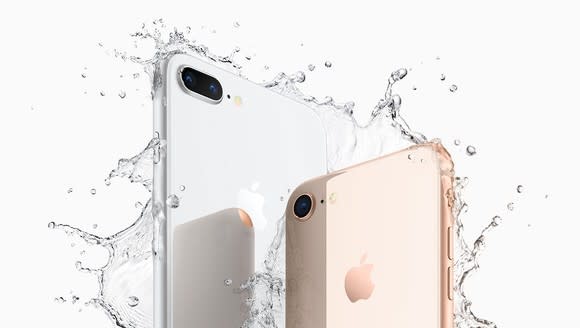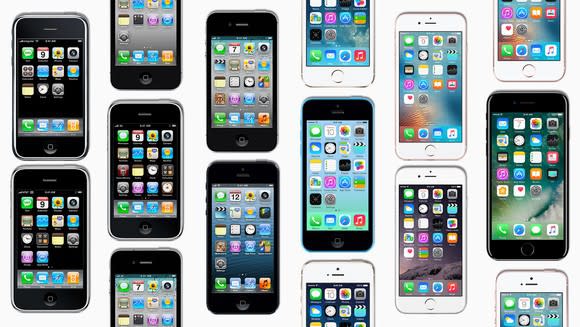1 Big Misconception About Apple's Upcoming 6.1-Inch LCD iPhone
It's widely believed that Apple (NASDAQ: AAPL) is planning to introduce three new iPhone models later this year. The cheapest of the bunch is expected to have a 6.1-inch liquid crystal display (LCD), while the two higher-end models are expected to incorporate 5.85-inch and 6.46-inch organic light-emitting diode (OLED) displays, as well as some aesthetic and internal hardware improvements.
In Forbes, contributor Ewan Spence refers to the presumed 6.1-inch LCD model as the iPhone SE 2, implying that it is a successor to the budget-friendly iPhone SE that launched back in March of 2016.
This notion is reasonably popular among those who follow Apple, but I don't think it's correct.

Image source: Apple.
The 6.1-inch LCD is the next iPhone
In the fall of 2017, Apple introduced three new iPhone models: iPhone 8, iPhone 8 Plus, and iPhone X. The iPhone 8 and iPhone 8 Plus were the next steps in their respective evolutionary lines, which began with the introductions of the iPhone 6 and iPhone 6 Plus in the fall of 2014. The 5.8-inch iPhone X represented, in effect, an entirely new category of iPhone -- an ultra-premium device with a price tag to match.
It's probably helpful to think of the iPhone 8 and iPhone 8 Plus as the newest iterations of the iPhone line, while the iPhone X is the first of an entirely new line of ultra-premium smartphones from Apple. In other words, Apple now has two smartphone product lines: iPhone and iPhone X.

Image source: Apple.
The 6.1-inch LCD iPhone, then, is likely simply the next step for the iPhone family, replacing both the iPhone 8 and iPhone 8 Plus. It's possible for Apple to replace both of those devices with a single model because of new screen technology that'll allow Apple to offer users the display area of the larger iPhone 8 Plus (5.5 inches) in a physical footprint that's similar to that of the smaller iPhone 8 (4.7 inches), so there's no reason for Apple's mainstream iPhone models to come in two sizes any longer.
The iPhone X series, on the other hand, is expected to come in two sizes because Apple might view potential iPhone X customers as its best, most enthusiastic customers (since they're willing to pay more), and as such, is willing to put in the work to offer them different screen size choices.
It's no different from what Apple is doing with the iPad lineup: The low-cost iPad comes in a single display size (9.7 inches) while the higher-priced iPad Pro lineup comes in two display sizes (10.5 inches and 12.9 inches).
What of the new iPhone SE?
There continue to be rumors that Apple is working on an updated version of the iPhone SE, and I think they're credible: The success of the iPhone SE means that it makes business sense for Apple to release an updated model. However, it's clear that the iPhone SE branding will be reserved for lower-cost/smaller-screen iPhone models that don't enjoy annual refreshes because the kinds of customers that are interested in such devices aren't likely to value rapid innovation as much as customers who prefer the larger-screen iPhone models do.
More From The Motley Fool
Ashraf Eassa has no position in any of the stocks mentioned. The Motley Fool owns shares of and recommends Apple. The Motley Fool has the following options: long January 2020 $150 calls on Apple and short January 2020 $155 calls on Apple. The Motley Fool has a disclosure policy.

 Yahoo Finance
Yahoo Finance 